Discover 15 hidden attractions, cool sights, and unusual things to do in Brest (France). Don't miss out on these must-see attractions: Château de Brest, Tour Tanguy, and Portzic Lighthouse. Also, be sure to include Cinémathèque de Bretagne in your itinerary.
Below, you can find the list of the most amazing places you should visit in Brest (Brittany).
Table of Contents
Château de Brest
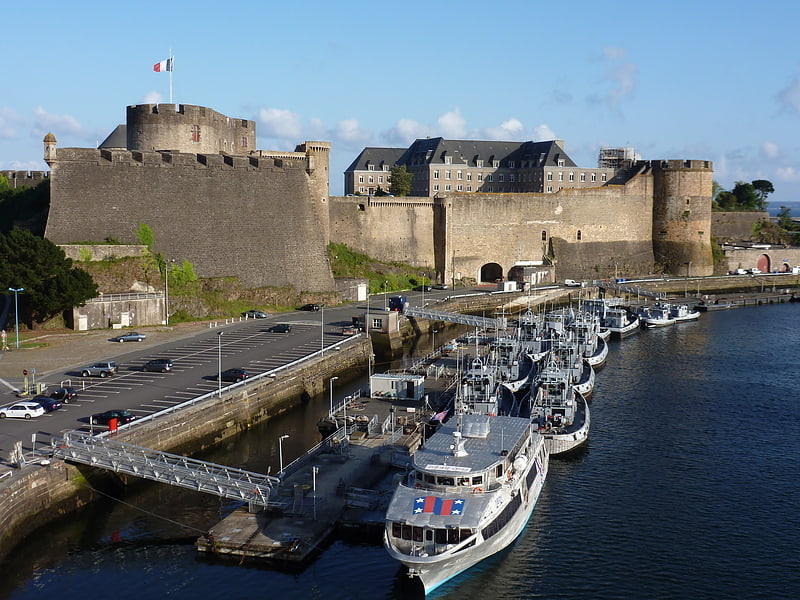
The Château de Brest is a castle in Brest, Finistère, France. The oldest monument in the town, it is located at the mouth of the river Penfeld at the heart of the roadstead of Brest, one of the largest roadsteads in the world. From the Roman castellum to Vauban's citadel, the site has over 1700 years of history, holding right up to the present day its original role as a military fortress and a strategic location of the highest importance. It is thus the oldest castle in the world still in use, and was classified as a monument historique on 21 March 1923.
The structure's heterogeneous architecture has been the result of continual adaptations to developments in siege warfare and armament on land and sea. The château stands on the opposite bank to the Tour Tanguy combining to defend the entrance to the Penfeld.[1]
Address: Avenue Franklin Roosevelt, 29000 Brest (Brest Centre)
Tour Tanguy
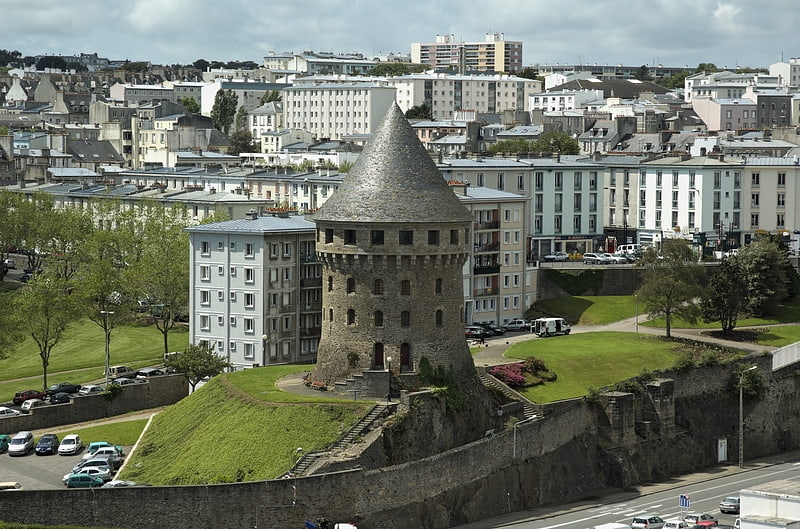
Museum in Brest, France. The Tour Tanguy, Bastille de Quilbignon or Tour de la Motte Tanguy is a medieval tower on a rocky motte beside the Penfeld river in Brest, France. Probably built during the Breton War of Succession, it faces the château de Brest and is now accessed by a road off the square Pierre Péron, at one end of the pont de Recouvrance. It now houses the Museum of Old Brest, a museum with a collection of dioramas that depict the city of Brest on the eve of World War II.[2]
Address: Square Pierre Péron, 29200 Brest (Brest Centre)
Portzic Lighthouse
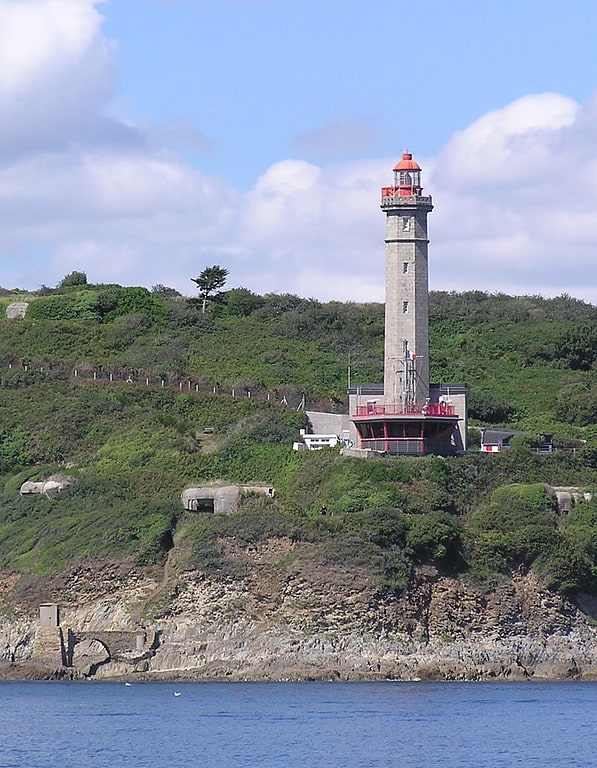
Also known as: Phare du Portzic
Lighthouse. The Portzic Lighthouse is situated on the north-eastern extremity of the Goulet de Brest and is the nearest lighthouse to the town of Brest. It is a 35 metres tall octagonal tower. On the seaward side of the bottleneck entrance to the goulet, the lighthouse faces the Pointe des Espagnols.
It was built on military land in 1848, at the same time as the phare du Petit Minou (started slightly earlier to the north of the Goulet. It was electrified in 1953 and automated in 1994 (though a semaphore post set up at its base in 1987 to regulate traffic in and out of the goulet is still permanently manned).[3]
Address: Pointe du Portzic, Brest (Saint-Pierre)
Cinémathèque de Bretagne
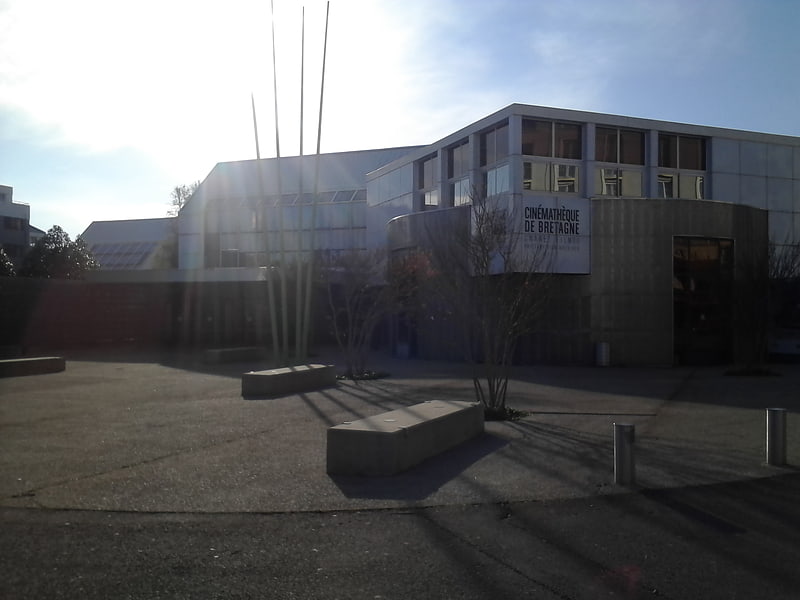
The Cinémathèque de Bretagne is an associative film archive created in 1986 in Ploërmel by Mathilde Valverde and André Colleu, and headquartered in Brest, France. Its aim is to preserve and disseminate the Breton audiovisual heritage..[4]
Fort de Portzic
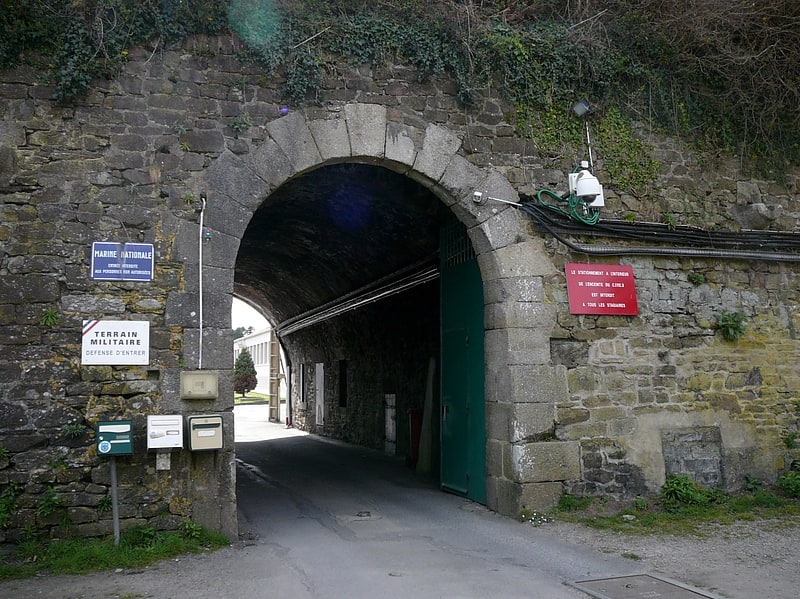
The Fort de Portzic was built near the town of Brest by Vauban between 1693 and 1699 as part of the defences of the goulet de Brest. It faces the pointe des Espagnols and was improved and enlarged over time, since it formed the town's last and innermost defence. The buildings on the site remain in military use. Nearby is the lighthouse Phare du Portzic.[5]
Conservatoire botanique national de Brest
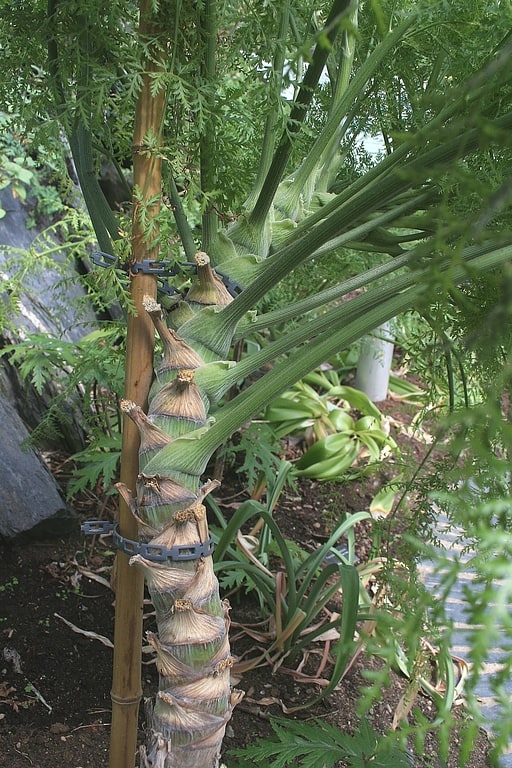
Botanical gardens for endangered plants. The Conservatoire botanique national de Brest is a notable botanical garden located at 52 Allée du Bot, Brest, Finistère, in the region of Brittany, France. It is open daily without charge.
The conservatory site was formerly a quarry and rubbish dump, purchased in 1971 by the municipality to create open space. The conservatory itself was founded in 1977 with a primary mission of preserving endangered species from the Armorican Massif (including parts of Brittany, Basse-Normandie and Pays de la Loire), France, Europe, and islands around the world, but also including plants from China, Japan, the Americas, Australia, and New Zealand. Since 1990 it has been designated a National Botanical Conservation Center to protect endangered and protected plants of the Armorican Massif.
Today the conservatory contains a remarkable collection of endangered plants, totaling about 1700 species, of which 20 species have been preserved in large part by the conservatory's actions. These very rare plants include Brighamia insignis, Centaurium favargeri, Cheirolophus massonianus, Cylindrocline lorencei, Dombeya cacuminum, Hibiscus insularis, Hibiscus liliiflorus, Impatiens thomassetii, Limonium humile, Normania triphylla, Ruizia cordata, and Trochetia boutoniana.
Additional specimens of interest include Amorphophallus titanum, Asparagus fallax, Astrophytum myriostigma, Angraecum sesquipedale, Commelina rupicola, Geranium maderense, Hibiscus storckii (H. rosa-sinensis), Lavandula pinnata, Limonium dendroides, Monizia edulis, Pachypodium rosulatum, Pelargonium cotyledonis, Tolpis glabrescens, Tournefortia bojeri, and Turbina inopinata.
The conservatory includes greenhouses (1000 m² total area), containing over 200 taxa of which 95% are endangered, which are subdivided into four sections: tropical mountains, dry tropics, humid tropical forests, and subtropical ocean islands. It also contains a herbarium (about 5,000 specimens) and cold storage rooms for packs of seeds.[6]
Fort du Questel
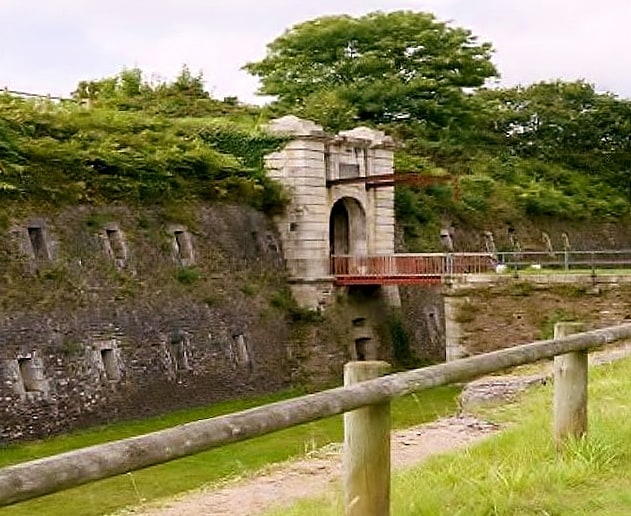
Historical landmark in Brest, France. Questel Fort is a redoubt in Brest. It is a fortified structure of the Vauban type. It forms a closed square, with the main entry point placed on the least exposed side. This large quadrangle, 100 meters wide, is located between Fort Keranroux and Fort Penfeld, and is also part of the same fortifications as Fort Montbarey.
The Fort du Questel monitors the valleys of the Moulin du Buis to prevent any enemies from becoming established and bombarding the city and harbor. Surrounded by deep moats and accessed by a drawbridge, it consists of a masonry wall (scarp), topped by a chemin de ronde, or covered path for musketeers. This path is itself dominated by an earthen rampart, angled to support artillery (26 guns total).
The garrison of about 200 men had access to various galleries, including two large ones underground that connect the central courtyard to the parapets. Note also the presence of toilet facilities, which at the time of Vauban were still a privilege. Built on a six-hectare site, the Fort du Questel dominates the valley of Allégoet, a tributary of the Penfeld. This site is now part of a set of refurbished natural spaces that lead to the banks of the Penfeld by a track passing in front of the Cavale Blanche hospital.
Onsite, the fortress offers walks through its sheltered green moat and its underground galleries, staircases, scarps and counterscarps, esplanade and fresh greenery nearby.[7]
Plage du Moulin Blanc
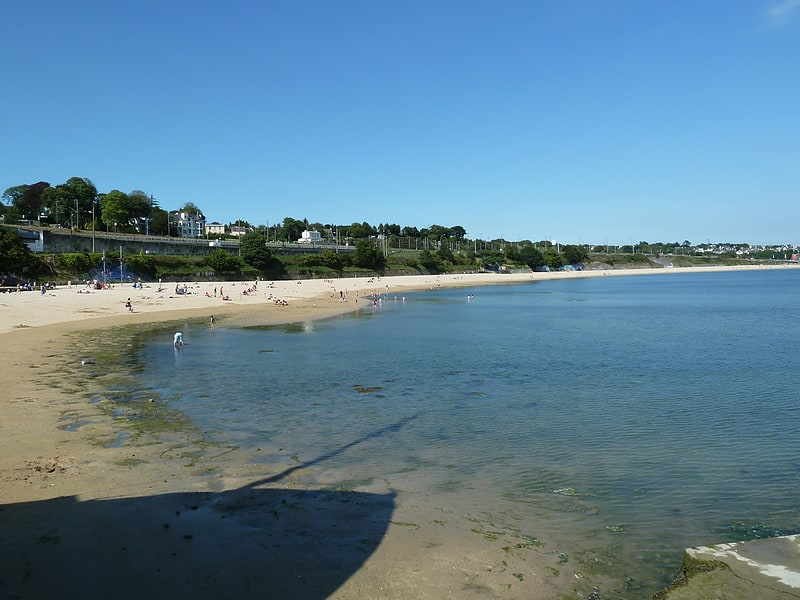
Moulin-Blanc is both the name of a beach and a marina in the Brest area, straddling the municipalities of Brest, Guipavas and Le Relecq-Kerhuon. The leisure park and large aquarium Océanopolis is installed on the marina's platform.
Address: Rue de Palaren, 29490 Guipavas
Fort Montbarey
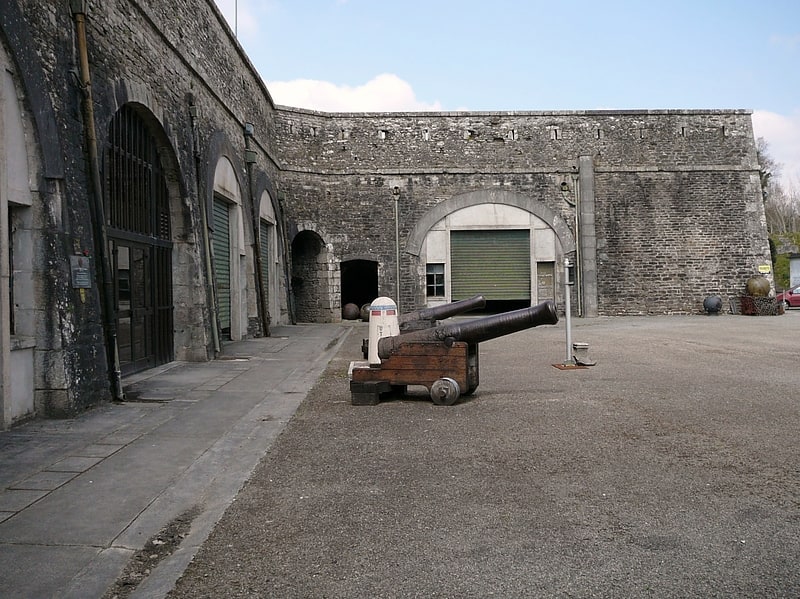
Memorial in Brest, France. The Fort Montbarey is a fortified stronghold, built between 1777 and 1784, to the west of Brest. The fort is similar to the related Questel Fort.[8]
Address: allee de Bir Hakeim, 29200 Brest (Saint-Pierre)
Pont de l'Harteloire

Also known as: Pont de l’Harteloire
Bridge in Brest, France. The Pont de l’Harteloire is a bridge in Brest, France. Upstream of the Pont de Recouvrance, it connects the two banks of the river Penfeld and overlooks the arsenal de Brest. It is on the site the naval transporter bridge was destroyed during the Second World War.[9]
Brest Arena
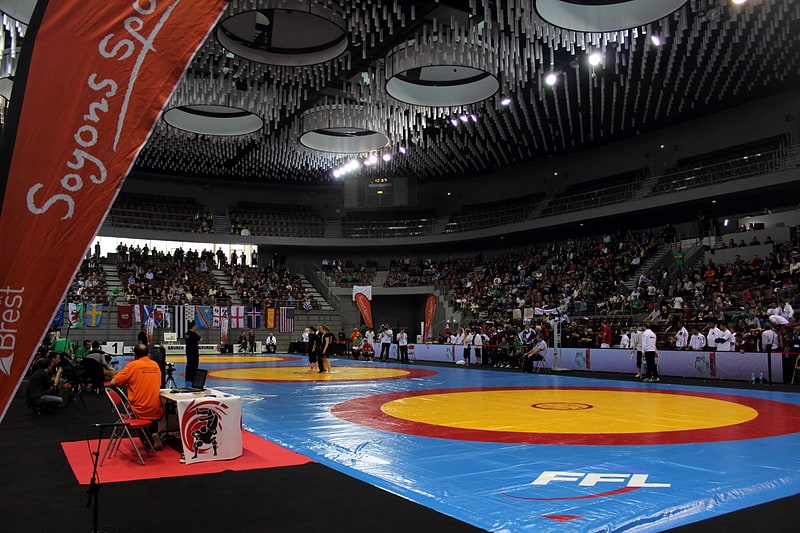
Arena in Brest, France. Brest Arena is a multi-purpose arena in Brest, France. Its tenant is Brest Bretagne Handball.[10]
Address: 140 boulevard de Plymouth, 29200 Brest (Rive Droite)
Jardin botanique de l'Hôpital d'Instruction des Armées Clermont-Tonnerre
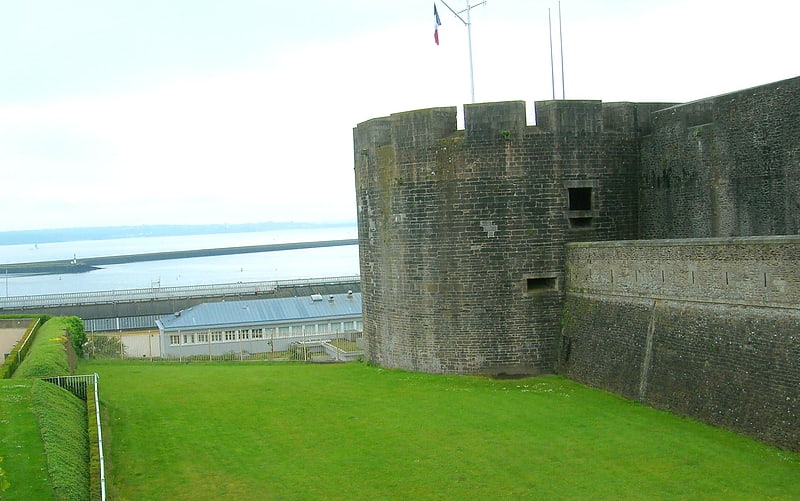
The Jardin botanique de l'Hôpital d'Instruction des Armées Clermont-Tonnerre is a botanical garden located on the grounds of the Hôpital d'Instruction des Armées Clermont-Tonnerre at Rue du Colonel Fonferrier, Brest, Finistère, in the region of Brittany, France. It is open to the public weekend afternoons; admission is free.
The garden was begun in 1688 by Desclouzeaux, Intendant de la Marine at Brest, as a jardin des simples for herbs and medicines on the grounds of the royal naval hospital (established 1684). Under the supervision of chief gardener Antoine Laurent (1744-1820) it developed greatly to become an important adjunct to the Jardin du Roi (now Jardin des Plantes) in Paris, as Brest's mild climate favored the cultivation of a wide variety of exotic plants from around the world. By the 19th century it had become a major botanical garden, but the slow withering of its original medical function led to a progressive decline. The garden's remnants were almost totally destroyed in World War II, along with the hospital itself, but in subsequent years the garden has been gradually been restored.
Today the garden's terraces are again open to the public, and still display some 19th-century accessions. The garden is described in Actu Santé as containing the oldest two Chinese palms in Europe, the largest Ginkgo biloba in Europe, and excellent specimens of Camellias and Gunnera manicata. Rare and valuable specimens are identified by signs.[11]
La Consulaire
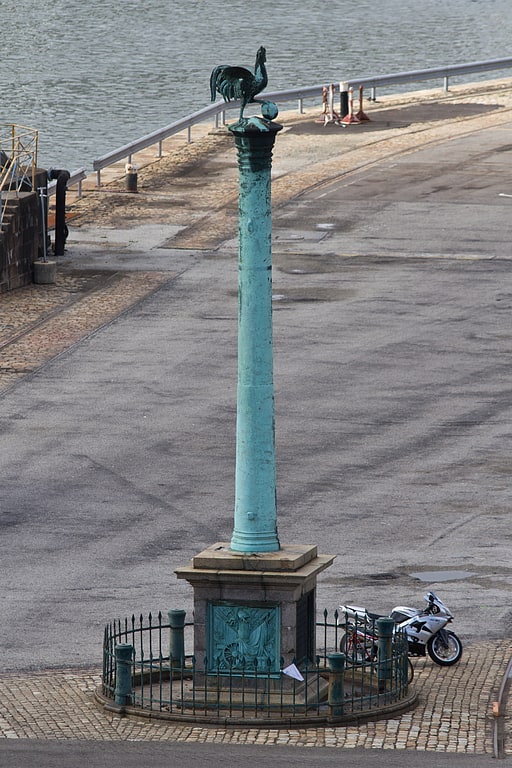
La Consulaire is the name of a very large Algerian Barbary artillery piece which famously defended Algiers harbour. It was looted by the French during the Invasion of Algiers in 1830, on 5 July, and taken as a trophy to Brest, where it is still displayed.
La Consulaire is a 23 -feet long smoothed-bore muzzle-loading gun, ordered by Hasan Pasha (son of Barbarossa) for the completion of the fortifications of Algiers. It was founded in Algiers in 1542 by a Venetian founder for Hasan Agha. Its original name is Baba Marzug ("lucky father").
The gun was used in 1683 to project the limbs of the consul of France, Jean Le Vacher, towards the fleet of Admiral Duquesne, earning it its name.
In 1830, a fleet under Admiral Duperré conquered Algiers and captured the gun. It was brought back to Brest and mounted on a granite stand decorated with high reliefs, and is on display inside the military zone of the Arsenal, near Recouvrance Bridge.[12]
Rue de Siam
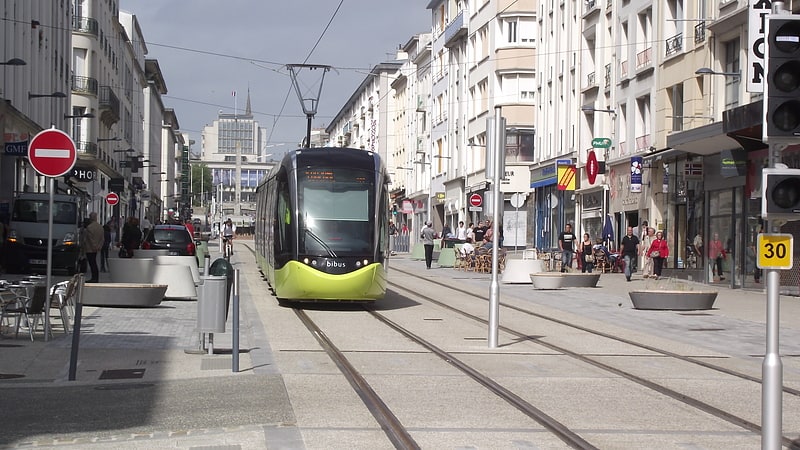
Main street in Brest, France. The rue de Siam is the main arterial street of Brest, a port city in Brittany, France. Its name comes from the arrival of three ambassadors led by Kosa Pan, sent by the King of Siam on the 29 June 1686 to meet Louis XIV in Versailles. They went with six mandarins, three translators, two secretaries and a retinue of servants, loaded with presents. They traveled on the boats l'Oiseau and La Maligne.
They crossed Saint-Pierre Street to go to the hostel of the same name. The inhabitants were so amazed that they renamed the street. The street was quite narrow before World War II.
The rue de Siam is quoted by Jacques Prévert in his poem Barbara.
Soi Charoen Krung 36 Alley, the location of French Embassy in Bangkok, was renamed in 2013 to "Rue de Brest" to commemorate diplomatic relations, reciprocating Rue de Siam.[13]
Musée de la Marine

The Musée national de la Marine de Brest is a maritime museum located in the castle of Brest.
It houses a heritage that bears witness to the history of the Brest arsenal and the French Navy.
Address: Rue du Chateau, 29200 Brest (Brest Centre)